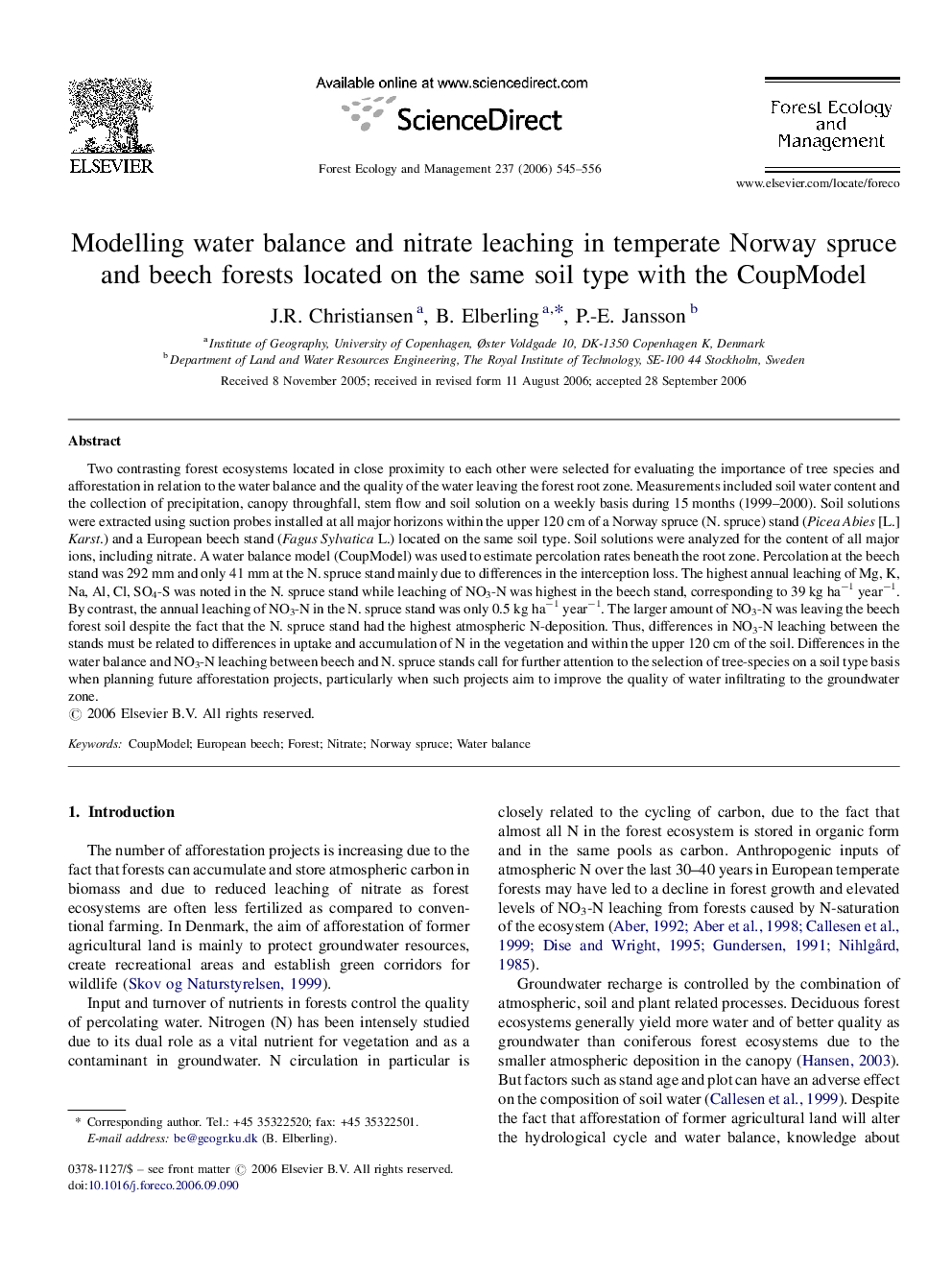| Article ID | Journal | Published Year | Pages | File Type |
|---|---|---|---|---|
| 89984 | Forest Ecology and Management | 2006 | 12 Pages |
Two contrasting forest ecosystems located in close proximity to each other were selected for evaluating the importance of tree species and afforestation in relation to the water balance and the quality of the water leaving the forest root zone. Measurements included soil water content and the collection of precipitation, canopy throughfall, stem flow and soil solution on a weekly basis during 15 months (1999–2000). Soil solutions were extracted using suction probes installed at all major horizons within the upper 120 cm of a Norway spruce (N. spruce) stand (Picea Abies [L.] Karst.) and a European beech stand (Fagus Sylvatica L.) located on the same soil type. Soil solutions were analyzed for the content of all major ions, including nitrate. A water balance model (CoupModel) was used to estimate percolation rates beneath the root zone. Percolation at the beech stand was 292 mm and only 41 mm at the N. spruce stand mainly due to differences in the interception loss. The highest annual leaching of Mg, K, Na, Al, Cl, SO4-S was noted in the N. spruce stand while leaching of NO3-N was highest in the beech stand, corresponding to 39 kg ha−1 year−1. By contrast, the annual leaching of NO3-N in the N. spruce stand was only 0.5 kg ha−1 year−1. The larger amount of NO3-N was leaving the beech forest soil despite the fact that the N. spruce stand had the highest atmospheric N-deposition. Thus, differences in NO3-N leaching between the stands must be related to differences in uptake and accumulation of N in the vegetation and within the upper 120 cm of the soil. Differences in the water balance and NO3-N leaching between beech and N. spruce stands call for further attention to the selection of tree-species on a soil type basis when planning future afforestation projects, particularly when such projects aim to improve the quality of water infiltrating to the groundwater zone.
